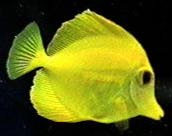.
Welcome
to MetapHoresis, LLC,
a research partnership, located in Pullman, Washington near Washington
State University.
MetapHoresis
is
a start-up, microchemistry company formed by Dr. Cornelius F. Ivory and
Protasis
Corporation to
commercialize the latest advance in separations technology for use by the
fast-growing life science, drug discovery and diagnostics markets. A
new technique,
dynamic field gradient focusing
(DFGF), invented by Dr.
Ivory, promises to dramatically extend the capabilities of traditional
chromatography and isoelectric focusing by combining them into a new,
perfectly balanced ultra-high resolution technique.
The Opportunity:
With
the end of the historic Human Genome Project now in sight, the life
science community is turning
its attention from DNA sequencing and profiling to proteomics, the
emerging science of the cellular protein universe—a universe that dwarfs
that of the genome.
Since the future of proteomics lies not in studying protein expression one by one, but rather looking at a multiplicity of expressed relationships, roles and interactions, the field demands new technologies and techniques that can accomplish this in an automated, large-scale manner. The market potential for these needed new technologies is as large as the current life science instrument market at more than $6B [SDI, 1998].
The
Problem:
No
one yet agrees on the best technology for proteomics. For more than two decades, proteomics’ workhorse technology
has been two-dimensional gel electrophoresis--the accepted technique for
looking at cellular protein constituents.
In the late 80’s the introduction of mass spectroscopy made it
possible to identify the protein’s exact molecular structure.
Even
so, gels are notoriously difficult to analyze.
The technique is also slow, often requiring tens of hours to
complete a single gel. It is
also difficult to automate. And,
obviously, a 2D gel can hardly be expected to discriminate the 100,000
some odd proteins which are thought to be expressed by the human genome.
Our Mission
MetapHoresis
was created expressly to design and deliver revolutionary new technologies
and techniques to the proteomics market.
Within the coming months, we will introduce our new, dynamic
electrofocusing technology (DFGF), which is fast, scalable and has a peak
capacity that can be adjusted in real-time.
Speed is gained by designing the device to operate at MEMS scale so
fractionation is completed in a few seconds.
Widely adjustable peak capacity is attained by using patented DFGF
focusing technology to dynamically monitor and control the fractionation
of each protein.
Unlike 2D gel,
MEMS-DFGF is :
- Fast
- Inherently parallel
- Innately automatable
- Readily coupled to NMR, MS, etc.
Another important
advantage: DFGF can adjust
and optimize peak mass and concentration to a given detection system, so
that trace proteins can be detected and analyzed in the presence of bulk
proteins.
Electrophoresis--an
overlooked opportunity:
Electrophoresis is a separations technology whose time has finally
come. For more than 30 years,
it has been passed over in favor of chromatography for processing organic
molecules, pharmaceuticals and, more recently, biologics.
Historically,
free-flow electrophoresis lacked the resolving power, ease of use, and
scope of application available with HPLC.
It was also widely believed that electrophoresis was not scalable
in terrestrial gravity. The
only exceptions to the paradigm were at analytical scales where gel
electrophoresis, CE, and, more recently, microfabricated chip-based
electrophoresis routinely outperform HPLC.
Now, recent advances in electrokinetic processing are turning this model on its head as scientific and engineering developments show that electrophoresis offers significant advantages over chromatography at all scales.
Key Advantages:
- Extraordinary resolving power
- Rapid process development
- Ease of automation
- A scalable model
- Economy of scale
Secondary
advantages:
-
True continuous operation at
-
Low pressure in
-
Free solution
-
-

Chromatography
going one way.

Electrophoresis going the
other.

In perfect balance
=> Ultra-high resolution separation and accumulation.